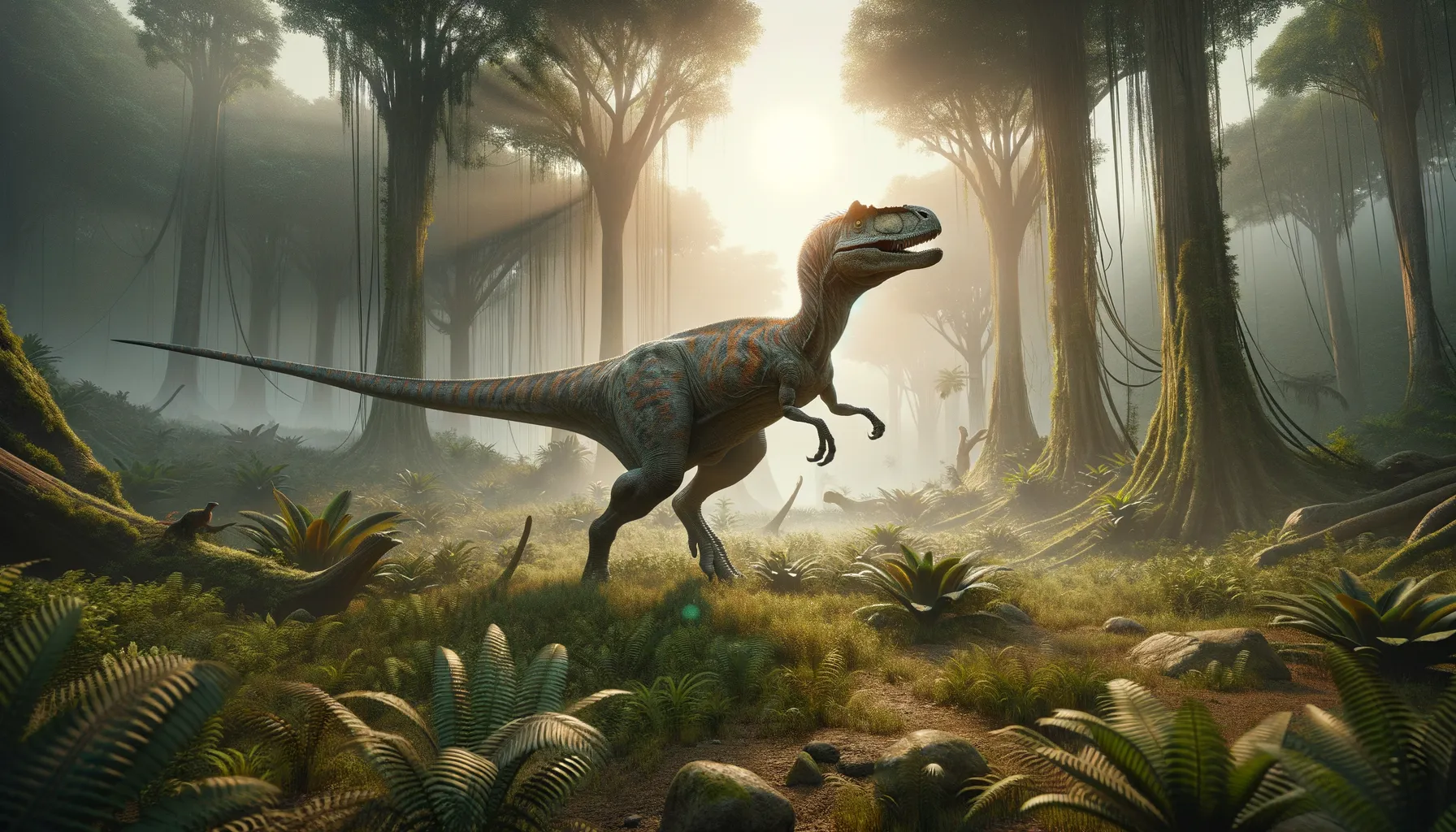
Tototlmimus
Swift mover of the Cretaceous landscape!
Period
Cretaceous
Length
Measured about 5 meters in length.
Height
Stood approximately 2 meters tall.
Weight
Weighed around 500 kilograms.
Tototlmimus was a bipedal dinosaur renowned for its agility and swift movements. Its elongated limbs and lightweight body structure aided its ability to sprint quickly, making it a formidable predator and escape artist. Tototlmimus thrived during the Cretaceous period and had an omnivorous diet, feeding on both plants and small animals. Paleontologists have pieced together its lifestyle through fossil remains primarily found in Asia.
Diet
Tototlmimus likely had an omnivorous diet, consuming plants, insects, and small vertebrates. Its sharp teeth and agile body assisted in capturing prey and grazing on various vegetation.
Hunting
It was an opportunistic feeder, chasing after quick prey using its speed. Moreover, it may have scavenged whenever the chance arose, utilizing its adaptability to survive in changing environments.
Environmental challenges
Living during the Cretaceous period, Tototlmimus faced fluctuating climates and the threat of larger predators. It inhabited regions with dense vegetation, which could both provide cover and pose navigational challenges. Seasonal changes might have affected food availability, necessitating flexible hunting and foraging strategies. Surviving in such a dynamic world required keen senses and adaptability.
Speed
Known for its swift, agile movements.
Lifespan
Estimated to have lived up to 20 years.
First discovery
Discovered in the early 21st century in Asia.
Fun Facts
- Tototlmimus is a type of theropod dinosaur that lived during the late Cretaceous period.
- It was discovered in the deserts of northern Mexico, marking a significant find for paleontology in the region.
- Tototlmimus means 'Tototl's mimic,' named for its bird-like appearance.
- Unlike many dinosaurs, Tototlmimus was quite agile and likely a fast runner thanks to its long legs.
- Its diet probably consisted of small animals and plants, making it an omnivore.
- Tototlmimus had a toothless beak, similar to modern birds.
- The discovery of Tototlmimus helps scientists understand the diversity of theropods in North America.
Growth and Development
Tototlmimus juveniles likely grew rapidly to avoid predation. As they matured, their limbs developed strength and agility, crucial for survival. The growth patterns suggest they reached full size relatively quickly to compete with other species.
Habitat
Tototlmimus thrived in semi-arid environments with open spaces and wooded areas. This habitat offered a mix of shelter and wide vistas for spotting danger. It needed access to freshwater and diverse foraging grounds for its varied diet. The landscape likely shaped its social interactions and movement patterns.
Interaction with other species
Tototlmimus lived among various dinosaurs, competing with other small carnivores for food. It may have formed loose associations with others of its kind to protect against larger predators. These interactions influenced its social structure and strategies for survival.
Natural lifespan
Tototlmimus probably had a natural lifespan of around two decades.
Reproduction
Tototlmimus is thought to have laid eggs in nests constructed carefully on the ground. Parental behaviors may have included guarding the nests to protect from predators. The young dinosaurs likely grew rapidly after hatching to increase their chance of survival.
Social behaviour
Tototlmimus may have exhibited social behaviors typical of many small dinosaurs, forming flocks for mutual protection. Communication involved vocalizations and body movements to maintain group cohesion. These social structures likely helped in sharing resources and avoiding predators.
Fossil locations
Fossilized remains of Tototlmimus have primarily been found in regions of Asia, contributing vital information about its lifestyle and environment. These fossils provided insight into its anatomy and evolutionary adaptations. Ongoing excavations continue to uncover more about this intriguing dinosaur.
